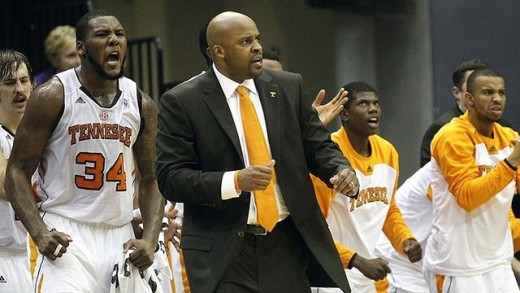Understanding Coach & Player Communication
Abstract
It is no question that player coach relationships and communication are both a major focus of sports media. Successful coaches have good relationships with their players and have good control of their teams as a result, while unsuccessful coaches seem to have difficulty getting respect from players or have unhealthy relationships with them. Coaches who don’t relate to their players and players who don’t respect their coaches build a relationship that is bound for failure. Analyzing this relationship on a more personal level can help to produce more cohesion in athletic organizations and overall better production from athletes. Through observing several relationships, their consequences, and doing research, it seems that the foundation of healthy player coach communication and player coach relationships can be pinpointed. Through the study of social penetration theory and social judgment theory, several key facets of how players and coaches effectively relate to one other can be observed. This relationship depends more on personal understanding than many realize. These theories go hand in hand toward understanding the relationship between players and coaches on a personal level, as well as how a player responds to their leader.
Understanding Coach and Player Communication through Social Theory
Different coaching philosophies affect different teams in very adverse ways. It is very important, as a coach, to adapt to the different player personalities that make up a team year in and year out, without compromising your level of authority and perceived reputation. In order to pursue this delicate balance of perceived authority and the ability to relate to players a coach needs to understand how to successfully establish a bond. When a player comes into an organization, there are stages of building trust and respect that follow the model of the Social Penetration theory. These steps are orientation of interaction, exploratory affective exchange, affective exchange, and finally stable exchange (Smith 2013). From examining the research, it seems that these first two steps are the most important and cannot be overlooked or else the health of the relationship is in serious jeopardy. Once these first two steps of the social penetration theory have been established, it allows the player to much more easily accept reprimands and guidance from the coach. The social judgment theory seems to come into play at parts 3 and 4 of the social penetration theory. At this point the social judgment theory can be observed and the coach can attempt to align the player’s anchor point with what he/she believes to be true (Sherif 1965). The coach can get the player to share in a common viewpoint, and count on the player’s cooperation with that viewpoint. These two theories can be used to understand and analyze the very delicate relationship that exists between players and coaches on various platforms throughout sports, and be used to maintain healthy relations in the team setting.
Coach Cuonzo Martin

Knowing What the Player Needs
The compatibility and the support a player feels from their coach has a huge impact on whether or not said player views their coach as a good leader. Different players operate very different psychologically, and may have very individual needs with respect to their teammates. Some players may have lower self-confidence, thus may need more support from a coach, while some may be very confident in their ability and not need much support at all. According to a study done by the Journal of Sports Behavior, athletes who felt more, compared to less, compatible with their coach experienced fewer negative cognitive/attentional and somatic effects from their coach's behavior during game situations (Kenow and Williams 1999). This study also states that if the athlete is incompatible with the coach (i.e., the athlete's goals, personality and beliefs are inconsistent with those of the coach), certain psychological needs for the athlete may not be met. This could lead to frustration and loss of self-confidence on the part of the athlete. These feelings may then impact on the athletes' perception and recall of coaching behaviors (Kenow and Williams 1999). Therefore, the player’s perception of the coach is very important, as it is directly linked to self-confidence and performance. In a healthy relationship, the player will have a positive perception of their coach, and, as a result, will have higher self-confidence and better performance.
Social Penetration Theory and Relationship Building
The social penetration theory states that people go through four stages, in which there is a greater level of personal disclosure at each level. To move to a subsequent stage, a
certain amount of breadth and depth of self-disclosure must be communicated (Dunleavey and Booth-Butterfiald 2009). At the first level of this theory, orientation of interaction, the player and coach would both size each other up at a very shallow level. This would likely occur on a recruiting visit where they meet each other for the first time. At this point there isn’t much of a relationship, but initial opinions of things like attitude, energy level, and self-confidence are perceived. At the second stage, exploratory affective exchange, both the player and coach start to get a deeper orientation for what the other’s character and personality are really like. This occurs in scenarios like practice, meetings, and film sessions where both the player and coach get to see how the other conducts themselves in situations where they need to perform. At this point, the level of value that coach and player have for the other starts to take shape, as the coach can gather how much trust he can put in that player, and the player gets to see what type of leader the coach really is. In the third stage, affective exchange, both parties continue the behavior exhibited in the second stage and have become trusting of each other at a personal level to the point of deciding whether or not they can be honest or real with that person. The coach begins to understand the player and apply that understanding to their performance. Every player has a different threshold of pain. Coaches who understand this can condition their players to accept pain (high levels of fatigue) as a positive rather than negative factor. By stressing that pain is a signal of great performance, and that athletes are constantly rewarded for enduring pain, the coach can get his players to push harder whenever they feel pain (Gamba 2009). It is also at this level that the player or coach decides whether or not they can go to the other person for help. It is more important for a player to feel this for the coach, and less so for the coach to feel that way about the player. In the final stage, stable exchange, the player looks to the coach as almost a father figure and feels that they can bring any problem they are facing up to the coach. “Successful coaches can interpret feedback given to them by players (and others) and use the feedback in making decisions. Feedback can result in subtle or drastic adjustments or none at all.” (Frost 2009) It is at this point that the player is most loyal, and the relationship between coach and player produces the best performance results.
Stand behind your team and they will stand behind you

Social Judgement Theory and Authority
Social judgment theory helps to explain how a player reacts to the things a coach says and does. This determines how the player will respond to inspiration, criticism, and punishment. The theory states that whatever one hears is filtered into latitude of acceptance, rejection, and noncommitment or ideas they neither accept nor reject (Atkin and Smith 2013). This theory most often comes into play at first meeting, but is at full maturity when the player and coach reach the third stage of the social penetration theory. At this point it is fully established as to whether or not the player responds well to the coach, and whether or not the coach is reaching the player. If they have developed a certain level of respect for one another, they will invest in one another solely due to the potential for success. When people feel happy in response to another’s success, the degree to which they feel happy should provide information about how close they are to that person (Hackenbracht and Gasper 2013). This theory helps to understand the authoritative aspect of the player coach relationship. The healthier the relationship, the more ideas, expressed by the coach, will be put into the player’s latitude of acceptance and less in the latitude of rejection.
Unhealthy Relationship Analysis
Any player coach experience can be analyzed using these two theories, and broken down to see why it went wrong. It is usually because one of the four steps of the social penetration theory was left out and the respect accrued in the social judgment theory was never developed. Take, for example, the case of Todd Marinovich. He had been raised as an athlete from birth, but when he got to college at USC he began to have drug problems that were hindering his ability. Due to the back and forth battle for respect in Todd’s relationship with Coach Smith, Todd hid his drug problems and Coach Smith tried numerous forceful ways to expose Todd. Eventually, Todd was booted from the team and went to the pros where his career soon ended because of the drug use (Sager 2010). In this relationship, Todd and Coach Smith developed negative opinions of each other in the orientation of interaction phase of social penetration. Todd’s excess of ability led to arrogance, and Smith’s refusal to acknowledge Todd’s ability let to conflict. This negative impression they had toward each other did not allow them to develop exploratory affective exchange, and the relationship ended in a heated parting. To Todd, all of Coach Smith’s ideas were placed into the latitude of rejection, and no respect was formed. This shows that the relationship is key to developing respect in a coach-player relationship.
Todd Marinovich

Healthy Relationship Analysis
Through examination of Kenow and Williams’ study on player coach relationships, it seems obvious that a good relationship is essential to the player and coach’s success. A good example of this is Jordan McRae’s relationship with Coach Cuonzo Martin. McRae came to UT under Pearl’s staff and never had a good relationship with any of the coaches. There were arguments and suspensions, as well as negative body language on the court. When Coach Martin arrived, he started to invest in Jordan and test him. “Sometimes they'd have lengthy, drawn-out phone conversations. Other times, Martin would be terse, sending a simple text message…” (Quinn 2013). Coach Martin took the time to invest in Jordan, thus the first two steps of the social penetration theory were developed. The continuation of this relationship gave way to steps three and four, and allowed for the emergence of positive social judgment between the two. Coach Martin approves of Jordan’s attitude and character, while Jordan approves of Coach Martin’s leadership ability. Thus, more of Coach Martin’s ideas and actions are placed into Jordan’s latitude of acceptance. This healthy player-coach relationship has resulted in Jordan’s improvement from 8.6 points per game last season to 15.7 this season. This goes to show what a good player-coach relationship can do.
Jordan McRae

Conclusion
Good relationships between players and coaches will breed good communication, which is essential to producing success. Players react positively to coaches they have good relationships with, and produce results as a direct correlation to that relationship. This relationship can be easily understood through the combination of the social penetration theory, and the social judgment theory. The relationship is developed through the social penetration theory, and the acceptance of authority and respect are outlined in the social judgment theory. Good player-coach relations produce good communication, which prevents problems from developing and gives the entire team a greater chance of success. These points have been outlined through observation of research, and through analyzing healthy and unhealthy player coach-relationships that have occurred in the past. By using the theories of social penetration and social judgment, one can understand player coach communication and analyze how healthy a relationship is.








